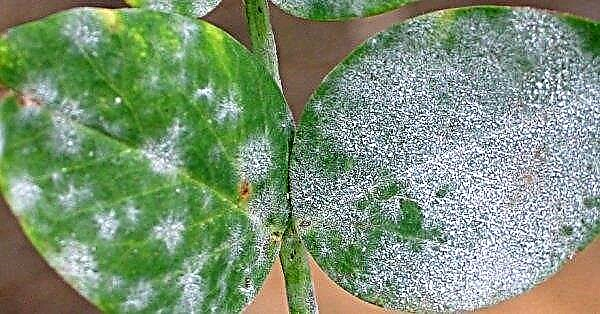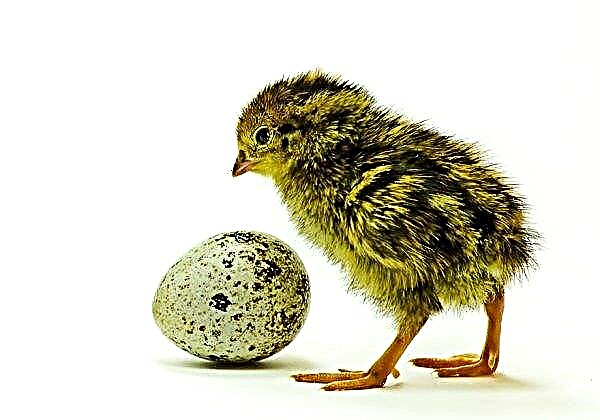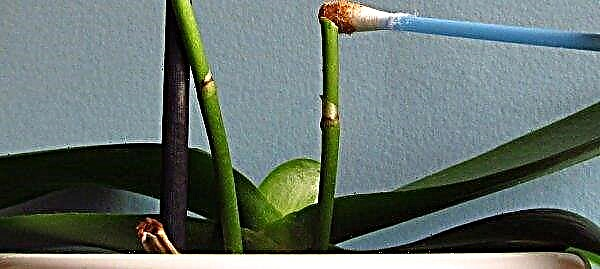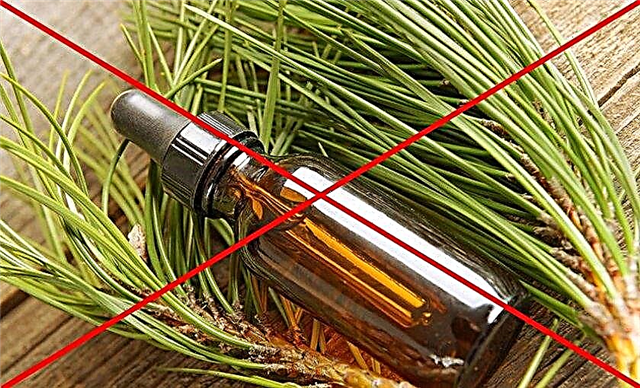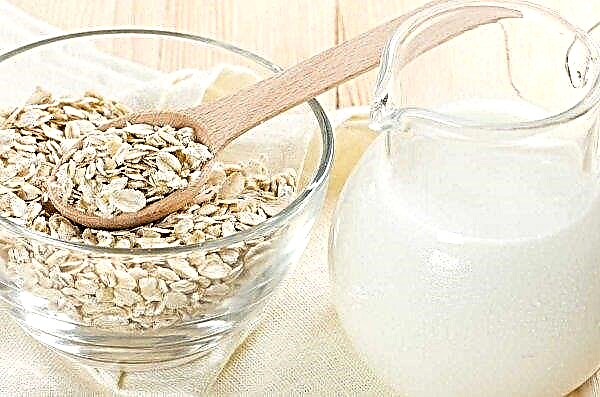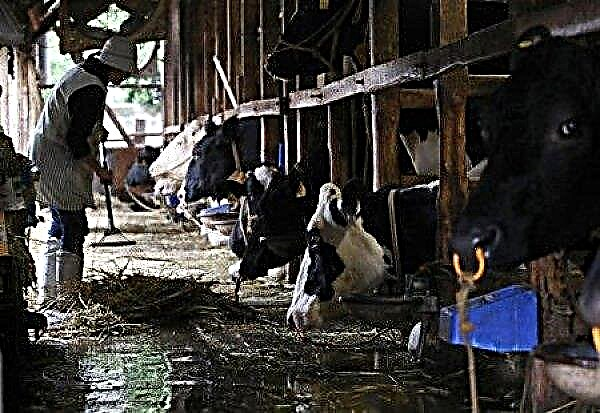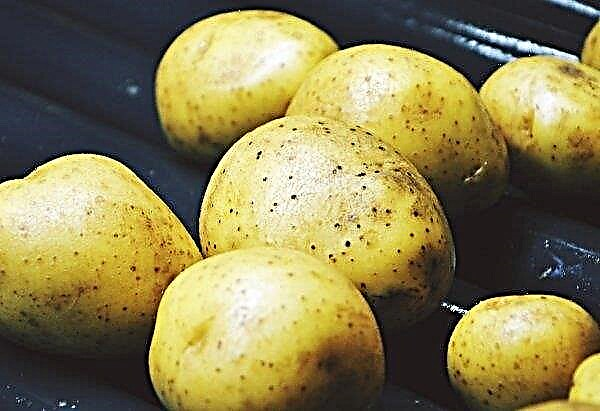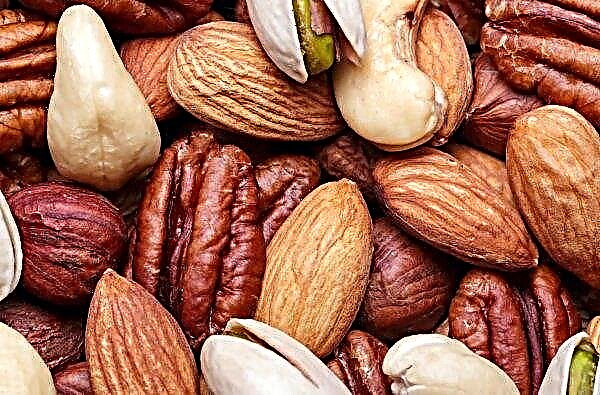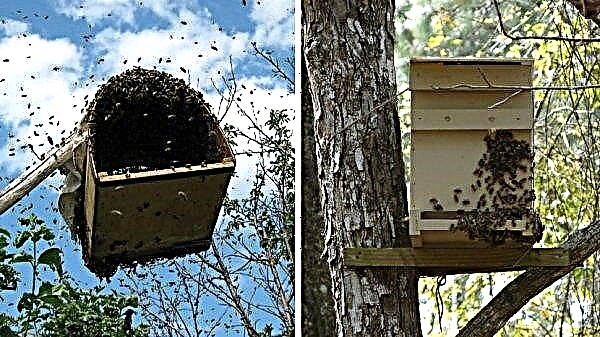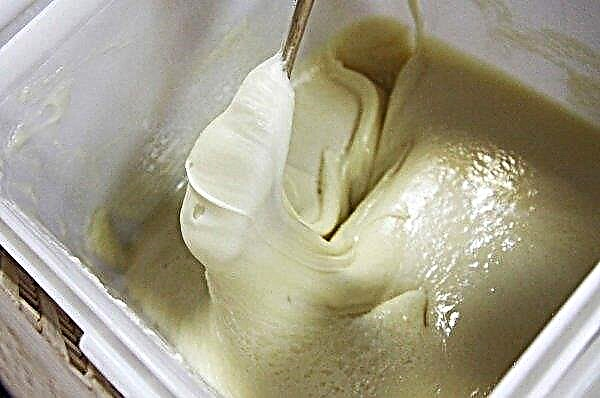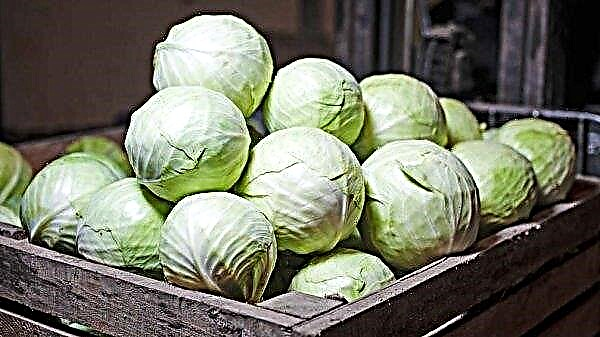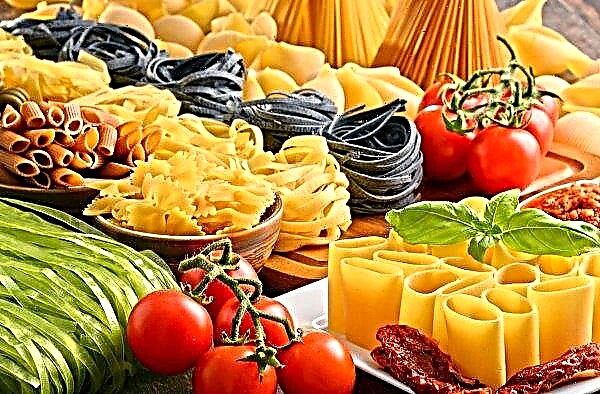At the ends of onion feathers, formations are sometimes found similar to the tip of an arrow - agronomists call this phenomenon shooting. A similar problem scares inexperienced gardeners. Farmers with experience know what to do if the bow goes into arrows. About why the bow is being arrowed and what to do with it - later in the article.
What is an arrow and what is its danger to a bow?
The arrow on the onion feather is its flowering. Over time, the inflorescence blooms and seeds appear. So onions reproduce naturally.
Shooting often makes adjustments to the plans of the gardener. Farmers grow onions for two purposes: onion and feather. When growing on a feather from the arrows there are no problems. The green part can be eaten even after shooting. Bulbs can also be eaten, but this phenomenon is dangerous for their harvest.Did you know? On the territory of China and India, onions were introduced into the culture in the III millennium BC. e.
Shooting causes several problems:
- bulbs grow smaller than expected, since most of the nutrients go to maintain inflorescences;
- the harvest will not be stored for a long time, its maximum storage life is until January.

The most dangerous is the appearance of shooters for varieties that are grown on bulbs.
Among them:
- onion;
- shallot or family;
- leek;
- slime;
- schnitt;
- batun.
Main reasons
Agronomists name three reasons for shooting: errors in the storage of planting material, the wrong size of the seed and the wrong timing of planting.
Did you know? Onion has a lot of vitamin C, so the product is recommended for the prevention and treatment of respiratory viral diseases.
Improper seed storage
At planting material at a temperature of +12 ... + 18 ° С, inflorescences are laid. It is impossible to withstand sevka in such conditions, otherwise the planted vegetable will go to the arrow.
To prevent problems, farmers maintain optimal temperature and humidity. Planting material is stored in two ways: cold and warm.
| Method | Temperature | Humidity |
| Cold | -3 ...- 1 ° С | 80–90% |
| Warm | +18 ... + 25 ° С | 50–65% |
Wrong size set
To get a high-quality crop, gardeners do not plant a large seedlings in the ground. For bulb harvesting, it is advisable to plant heads with a diameter of up to 1 cm. Large planting material is suitable for planting on feathers.
Unsuitable landing dates
Dates for landing are selected based on the weather forecast. The soil on the site should warm up to +10 ... + 12 ° С. In the middle lane, the temperature rises to this level in April. If you land sevka ahead of time, the formation of arrows is likely.
What should I do?
The way out of the situation is simple - inflorescences need to be torn off or pruned. If the arrow has already appeared, even after removing the inflorescences will grow again and again.
Many gardeners advise removing arrows and immediately use the product on feathers. It is believed that there is no point in harvesting bulbs from shooters. The next time you land, consider all errors to avoid a problem.Important! It is better to remove the arrows under the neck - in this way you can try to save the bulb harvest.
How to prevent bow shooting?
To prevent inflorescences on feathers, think about prevention in advance.
Agronomists call the following measures effective:
- Buy planting material from trusted sellers or in specialized stores with the appropriate certification. When buying on the market or with your hands, you cannot be sure of the correct storage of seeds.
- If you purchased sevoc from a dubious seller, try warming the bulbs. 2-3 weeks before planting in the soil, withstand them at a temperature of +25 ... + 32 ° C. A battery or any other warm surface is suitable for warming.
- Sort the seeds before planting. Plant only small specimens up to 1 cm in diameter on the bulbs.
- Keep the distance between the seeds in a row. The distance between the heads should be about 5 cm.
- Maintain a landing time. Do not plant the crop in the ground colder + 10 ° C. Late planting will also not have the best effect on the crop.
- Try planting winter onions. Landing under the winter eliminates the appearance of arrows. Winter planting has many other benefits - for example, early harvest and larger bulbs.
Important! For winter planting, use only frost-resistant onions - Shakespeare, Senshui, Baron or other winter varieties.
Additional recommendations for growing onions
So that the onion grows well and gives a large crop, adhere to the additional recommendations of agronomists:
- Vegetable does not tolerate acidic and heavy soil with a lot of clay. If possible, plant the crop on sandy and peat substrates. In other types of soil mono add sand and peat when planting.
- Before planting, the material should be disinfected with potassium permanganate. From fungi and insects, many farmers treat seed crops with fungicides and insecticides for prevention.
- Do not fill the beds with water. Onions need watering, but the crop can rot from heavy irrigation. Before watering, wait until the topsoil has dried out.
- Culture needs fertilizing three times during the growing season - after the appearance of feathers, 2 weeks after the first fertilizer and at the end of June. The main rule of nutrition - do not use a lot of nitrogen, as the crop will be spoiled. Also avoid fresh manure that produces nitrogen that is hazardous to the bulbs.
- After harvesting, dry the bulbs in the beds. Only then can they be stored.
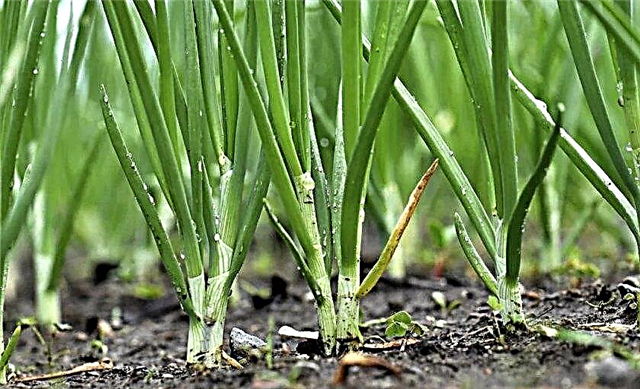
Onion shooting is not a terrible problem when growing a vegetable on a feather, but the appearance of inflorescences is harmful to the bulbs. To prevent problems, you should think about prevention in advance and follow all the rules of planting a crop.



